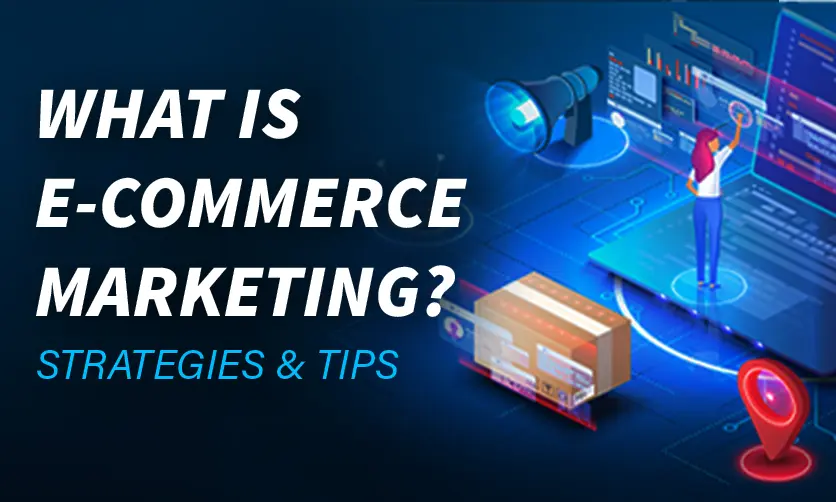
What Is E-commerce Marketing? Strategies & Tips
After the world wide web came into existence in 1993 opportunities for retailers flourished at a faster pace. E-commerce marketing has become an integral part of marketing strategies for various brands.
Today, there are 2 billion digital shoppers all across the globe. Convenience, security, and experience are associated with online shopping. This can boost the scope of your brand value in the long run.
E-commerce digital marketing strategies can help your brand to move in the right order. Today, E-commerce marketing has become the backbone of any business while you want to grow your business perfectly.
Table of Contents
- What Is E-commerce Marketing?
- Types Of E-commerce Marketing Channels
- Pillars Of Modern E-commerce Marketing
- Best E-commerce Marketing Strategies & Techniques
- Developing An E-commerce Marketing Strategy
- Ways To Measure E-commerce Marketing Success
- E-commerce Marketing Challenges
- E-Commerce Conversion Rate Optimization
- Future Trends In E-commerce Marketing
- How To Improve E-commerce Marketing With Emarsys
- FAQ(Frequently Asked Questions)
- Final Takeaway
What Is E-commerce Marketing?
E-commerce marketing is the process of promoting and selling products or services through online platforms to drive traffic, engage customers, and increase sales.
It involves strategies like search engine optimization (SEO), pay-per-click (PPC) advertising, social media marketing, email campaigns, content marketing, and influencer partnerships to attract and convert online shoppers.
The goal is to enhance brand visibility, optimize user experience on e-commerce websites or apps, and build customer loyalty through personalized and data-driven approaches. For example, tactics like retargeting ads or offering discounts can encourage purchases, while analytics help refine strategies based on customer behavior
Level Up Your Skills. Make Your Mark in the Digital Marketing Industry.Learn Practical Skills Directly from Industry Professionals |
|
| Advanced Digital Marketing | |
| More Learning Options for you: Google Ads Certification | Diploma in Digital Marketing | Facebook Ads Course |
Types Of E-commerce Marketing Channels
E-commerce marketing channels are the platforms and methods used to promote and sell products or services online. Here are the main types of e-commerce marketing channels:
1. Search Engine Optimization (SEO):
Optimizing your e-commerce website to rank higher on search engines like Google, driving organic traffic through keyword research, on-page SEO (e.g., product descriptions, meta tags), and technical SEO (e.g., site speed, mobile optimization). E-commerce marketing strategies can make things work well for you.
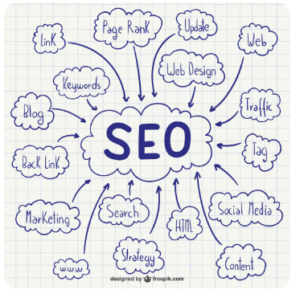
2. Pay-Per-Click (PPC) Advertising:
Paid ads on search engines (e.g., Google Ads) or social media platforms, where advertisers pay for each click. Includes search ads, display ads, and shopping ads (e.g., Google Shopping) to target specific audiences.

3. Social Media Marketing:
Promoting products on platforms like Instagram, Facebook, TikTok, or Pinterest through organic posts, stories, or paid ads. Includes influencer collaborations and shoppable posts to engage users and drive sales. E-commerce SEO includes social media marketing activities to meet your needs with ease.
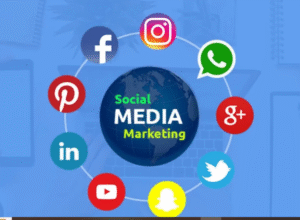
4. Email Marketing:
Sending targeted emails to nurture leads and retain customers. Examples include promotional offers, abandoned cart reminders, newsletters, and personalized product recommendations based on user behavior.

5. Content Marketing:
Creating valuable content like blogs, videos, or guides to attract and educate customers. For example, a blog on “How to Choose the Right Skincare Products” can drive traffic to a beauty e-commerce site.
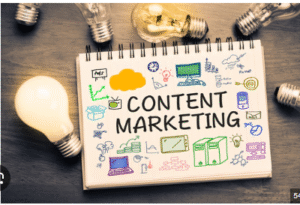
6. Affiliate Marketing:
Partnering with affiliates (e.g., bloggers, influencers) who promote your products for a commission. They share unique links to drive traffic and sales to your e-commerce platform. It is one of the crucial aspects of e-commerce marketing to look forward to generating maximum revenue.
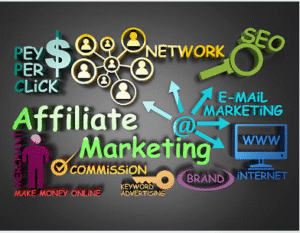
7. Influencer Marketing:
Collaborating with influencers to showcase products to their followers, leveraging their trust and reach to boost brand credibility and sales. It is one of the crucial aspects of E-commerce marketing to look forward to.

8. Marketplace Advertising:
Running ads on e-commerce marketplaces like Amazon, eBay, or Etsy to increase product visibility within their ecosystems, targeting shoppers already browsing these platforms.
9. Retargeting/Remarketing:
Displaying ads to users who previously visited your site or interacted with your brand (e.g., viewed a product but didn’t purchase), using platforms like Google Ads or Facebook Pixel to re-engage them.
10. Video Marketing:
Using video content on platforms like YouTube, TikTok, or Instagram Reels to showcase products, share tutorials, or tell brand stories, driving engagement and conversions. Here, proper planning holds the key while you devise the E-commerce strategy for E-commerce marketing.
Few related topics for your knowledge
- 30 Important Strategies For Facebook Ads
- 30 Effective Link Building Strategies Of 2025
- 25 Effective Bid Strategies In Google Ads To Maximize ROI
- Zomato Marketing Strategy- A Detailed Case Study
- Competitor Benchmarking: What It Is And Why It’s Important
- Game-Changing Important Strategies for YouTube Marketing Success
Pillars Of Modern E-commerce Marketing
The growth of E-commerce depends on a system that enhances with every cycle. When you execute well all these four pillars form a flywheel that is responsible for driving sustainable results.
1. Acquisition
This pillar focuses on attracting potential customers to your e-commerce platform. It involves strategies to increase visibility, drive traffic, and build awareness. The goal is to bring in high-quality leads who are likely to engage with your brand. It is one of the crucial pillars of E-commerce marketing.
Key Strategies:
- Search Engine Optimization (SEO): Optimizing your website and content to rank higher in search engine results, drawing organic traffic.
- Paid Advertising: Using platforms like Google Ads or Facebook Ads to target specific demographics.
- Social Media Marketing: Posting engaging content on Instagram or TikTok to reach new audiences.
- Influencer Partnerships: Collaborating with influencers to tap into their follower base.
- Content Marketing: Creating blogs, videos, or guides that attract visitors searching for related information.
Examples:
- A clothing brand like Shein uses TikTok ads and influencer collaborations to acquire young fashion enthusiasts, driving millions of visitors to their site.
- Amazon employs SEO by optimizing product listings with keywords, ensuring they appear in top search results for queries like “wireless earbuds,” attracting shoppers without paid promotion.
Flywheel Impact: Successful acquisition provides the initial traffic needed for conversions, and data from acquired users informs future targeting.
2. Conversion
Once visitors are on your site, this pillar aims to turn them into paying customers. It emphasizes optimizing the user journey to reduce friction and encourage purchases, focusing on persuasion and ease of transaction.
Key Strategies:
- User Experience (UX) Design: Streamlining navigation, checkout processes, and mobile responsiveness.
- Personalization: Recommending products based on browsing history or preferences.
- Trust Signals: Displaying reviews, secure payment badges, and return policies.
- Promotions and Incentives: Offering discounts, free shipping, or limited-time deals.
- A/B Testing: Experimenting with page layouts, button colors, or call-to-action text to boost conversion rates.
Examples:
- Shopify stores often use abandoned cart emails with personalized discounts (e.g., “Complete your purchase and save 10% on that dress you liked”) to recover lost sales, converting hesitant visitors.
- Warby Parker provides a virtual try-on feature for glasses, reducing uncertainty and increasing the likelihood of purchase from 5-10% to higher rates by making the experience interactive.
Flywheel Impact: High conversion rates mean more revenue from acquired traffic, which can be reinvested in retention efforts, while converted customers provide data for analysis.
3. Retention
This pillar is about keeping customers coming back for repeat purchases and fostering loyalty. It shifts focus from one-time sales to long-term relationships, reducing the cost of acquiring new customers over time.
Key Strategies:
- Loyalty Programs: Rewarding repeat buyers with points, discounts, or exclusive access.
- Email and SMS Marketing: Sending personalized newsletters, product updates, or re-engagement campaigns.
- Customer Service Excellence: Providing quick support via chatbots or live agents to resolve issues.
- Community Building: Creating social media groups or forums where customers can interact.
- Subscription Models: Offering recurring deliveries for products like groceries or beauty items.
Examples:
- Starbucks’ rewards app retains customers by offering free drinks after a certain number of purchases, encouraging frequent visits and increasing lifetime value.
- Sephora’s Beauty Insider program provides tiered rewards (e.g., free samples for points), turning one-time buyers into loyal advocates who spend 2-3 times more annually.
Flywheel Impact:
Retained customers often become advocates, aiding acquisition through word-of-mouth, and their ongoing data helps refine conversion and analysis.
4. Analysis
This pillar involves measuring performance, gathering insights, and iterating on strategies. It uses data to understand what works and what doesn’t, ensuring continuous improvement across the other pillars.
Key Strategies:
- Analytics Tools: Using Google Analytics, Hotjar, or CRM software to track metrics like traffic sources, bounce rates, and customer lifetime value.
- Customer Feedback: Collecting surveys, reviews, or Net Promoter Scores (NPS) to gauge satisfaction.
- Data Segmentation: Breaking down data by demographics, behavior, or channels for targeted insights.
- Predictive Analytics: Employing AI to forecast trends or identify at-risk customers.
- Reporting and Iteration: Regularly reviewing KPIs and adjusting campaigns based on findings.
Examples:
- Zappos analyzes customer service interactions and return data to identify pain points, leading to improvements like free returns, which boosted retention by 20%.
- Nike uses app data to track user engagement, revealing that personalized shoe recommendations increase conversions by 15%, allowing them to refine acquisition ads accordingly.
Flywheel Impact: Insights from analysis optimize acquisition targeting, conversion tactics, and retention programs, accelerating the entire cycle for exponential growth.
Best E-commerce Marketing Strategies & Techniques
There are several E-commerce marketing strategies & techniques that you must be well aware of while meeting your goals. Some of the key marketing strategies & techniques that you should know from your end are as follows:-
1. Optimize For Search Engine Visibility
Why It Works: Ranking high on search engines drives organic traffic, reducing reliance on paid channels and attracting high-intent customers.
- Technique: SEO for Product Pages
- Use keyword research tools like Ahrefs or SEMrush to identify high-volume, low-competition keywords (e.g., “best running shoes for women”).
- Optimize product titles, descriptions, and meta tags with these keywords while keeping them natural and user-focused.
- Add high-quality images, alt text, and structured data (schema markup) to improve click-through rates and rich snippet visibility.
- Technique: Voice Search Optimization
- Optimize for conversational queries (e.g., “where can I buy eco-friendly yoga mats”) as voice assistants like Alexa and Siri gain popularity.
- Use long-tail keywords and FAQ sections to address voice search patterns.
- Example: Allbirds, a sustainable shoe brand, ranks highly for “eco-friendly sneakers” by optimizing product pages with detailed descriptions, customer reviews, and sustainability-focused content, driving 20-30% of their traffic organically.
- Flywheel Impact: Boosts acquisition by bringing in cost-effective traffic, which can be converted and analyzed for further optimization.
2. Leverage Paid Advertising With Precision Targeting
Why It Works: Paid ads deliver immediate traffic and allow hyper-targeted campaigns to reach specific audiences, improving conversion rates.
- Technique: Dynamic Product Ads
- Use platforms like Google Shopping or Facebook Dynamic Ads to automatically show products to users based on their browsing history or interests.
- Implement retargeting to re-engage users who viewed products but didn’t purchase.
- Technique: Lookalike Audiences
- Create lookalike audiences on platforms like Meta Ads to target users similar to your existing customers, increasing the likelihood of conversions.
- Example: Gymshark uses Instagram and TikTok ads to target fitness enthusiasts with dynamic ads showcasing recently viewed workout gear, achieving a 3-5x return on ad spend (ROAS).
- Flywheel Impact: Drives acquisition by reaching new audiences and boosts conversion by showing relevant products, with data feeding into analysis for campaign refinement.
3. Personalize The Customer Journey
Why It Works: Personalization increases engagement and trust, making customers more likely to buy and return.
- Technique: AI-Driven Product Recommendations
- Use AI tools like Dynamic Yield or Algolia to suggest products based on browsing history, purchase patterns, or similar customer profiles.
- Place recommendations on product pages, carts, and post-purchase emails (e.g., “Complete the Look”).
- Technique: Personalized Email Campaigns
- Segment email lists by behavior (e.g., first-time buyers, inactive users) and send tailored offers, such as discounts for abandoned carts or birthday rewards.
- Example: Amazon’s recommendation engine drives 35% of its sales by suggesting items based on user data, while their personalized emails (e.g., “Back in Stock” alerts) re-engage customers effectively.
- Flywheel Impact: Enhances conversion by making offers relevant and strengthens retention by keeping customers engaged, with data fueling analysis.
4. Build A Robust Loyalty Program
Why It Works: Rewarding repeat customers increases customer lifetime value (CLV) and encourages advocacy, reducing acquisition costs.
- Technique: Tiered Rewards System
- Offer escalating benefits (e.g., points, exclusive discounts, early access) based on purchase frequency or spend.
- Gamify the experience with progress bars or milestones to keep customers engaged.
- Technique: Post-Purchase Engagement
- Send thank-you emails with loyalty program sign-up prompts or exclusive offers for the next purchase.
- Example: Sephora’s Beauty Insider program offers points per dollar spent, redeemable for products, and VIP tiers with perks like free makeovers, leading to a 50%+ repeat purchase rate.
- Flywheel Impact: Boosts retention by encouraging repeat purchases, which fuels word-of-mouth acquisition and provides data for analysis.
5. Harness Social Commerce & Influential Marketing
- Why It Works: Social platforms and influencers build trust and enable direct purchases, capitalizing on impulse buying trends.
- Technique: Shoppable Social Posts
- Use Instagram Shops or TikTok Shop to create seamless purchase paths within social platforms.
- Post engaging content like Reels or Stories with product tags to drive instant sales.
- Technique: Micro-Influencer Partnerships
- Collaborate with niche influencers (10k-100k followers) for authentic promotions, as they often have higher engagement rates (3-5% vs. 1% for mega-influencers).
- Example: Fashion Nova partners with micro-influencers on Instagram to showcase outfits, driving millions in sales through shoppable posts and affiliate links.
- Flywheel Impact: Attracts new customers via social reach, converts through direct purchasing, and supports retention with engaging content, all trackable via analysis.
6. Reduce Cart Abandonment With Frictionless Check Out
Why It Works: Simplifying the checkout process minimizes drop-offs, as 70% of carts are abandoned due to complexity or unexpected costs.
- Technique: Streamlined Checkout
- Offer guest checkout, autofill forms, and multiple payment options (e.g., PayPal, Apple Pay, BNPL like Klarna).
- Display shipping costs early and provide progress indicators during checkout.
- Technique: Abandoned Cart Recovery
- Send automated emails or SMS within 1-24 hours of abandonment with incentives like discounts or free shipping.
- Example: ASOS reduced cart abandonment by 10% by offering Klarna’s “Buy Now, Pay Later” and sending timely recovery emails with 5% off codes.
- Flywheel Impact: Increases conversion by capturing more sales, with recovered carts feeding retention efforts and data for analysis.
Developing An E-commerce Marketing Strategy
Creating a successful e-commerce marketing strategy requires a structured approach that integrates the core pillars of acquisition, conversion, retention, and analysis. This guide outlines actionable steps to build a strategy that attracts customers, drives sales, fosters loyalty, and optimizes performance through data-driven iteration. Each step includes practical techniques and examples to ensure sustainable growth in a competitive online landscape.
Step -1 Define Your Goals & KPI’s
Why It Matters: Clear objectives align your efforts with business priorities, while key performance indicators (KPIs) measure success across the flywheel.
- Action: Set SMART goals (Specific, Measurable, Achievable, Relevant, Time-bound) for each pillar:
- Acquisition: Increase website traffic by 20% in 6 months.
- Conversion: Boost conversion rate from 2% to 3.5% in 3 months.
- Retention: Achieve a 15% repeat purchase rate within a year.
- Analysis: Reduce customer acquisition cost (CAC) by 10% through optimized campaigns.
- Technique: Use tools like Google Analytics or Shopify Analytics to establish baseline metrics (e.g., current traffic, conversion rate, CLV). Define KPIs such as cost-per-click (CPC), return on ad spend (ROAS), and customer retention rate.
- Example: Glossier set a goal to grow Instagram-driven traffic by 25% in 2023, using engagement metrics and shoppable post conversions as KPIs, which helped them focus on social commerce.
- Flywheel Impact: Goals provide direction for acquisition, conversion, and retention, while KPIs enable analysis to track progress.
Step -2 Understand Your Target Audience
Why It Matters: Knowing your customers’ needs, behaviors, and preferences allows you to tailor strategies for maximum impact.
- Action: Create detailed buyer personas based on demographics, psychographics, and online behavior.
- Collect data from website analytics, CRM tools (e.g., HubSpot), or customer surveys.
- Segment audiences by factors like age, location, interests, or purchase history (e.g., frequent buyers vs. one-time shoppers).
- Technique: Use social listening tools like Brandwatch to monitor conversations on platforms like X or Instagram for insights into customer pain points and trends.
- Example: Nike analyzed data to identify fitness enthusiasts aged 18-34 as a key segment, tailoring their app with AR sneaker try-ons to appeal to mobile-savvy users.
- Flywheel Impact: Informs acquisition (targeted ads), conversion (personalized UX), and retention (relevant offers), with analysis refining personas over time.
Step -3 Build A Strong Brand Identity
Why It Matters: A consistent and compelling brand builds trust and differentiates you in a crowded market.
- Action: Develop a unique value proposition (UVP) and cohesive brand elements (logo, colors, tone).
- Ensure branding is consistent across your website, social media, emails, and packaging.
- Highlight what sets you apart (e.g., sustainability, quality, affordability).
- Technique: Create a brand style guide to maintain uniformity and use storytelling (e.g., “About Us” page) to connect emotionally with customers.
- Example: Allbirds emphasizes its eco-friendly materials in branding, using consistent green tones and sustainability messaging across its site and social campaigns, resonating with environmentally conscious shoppers.
- Flywheel Impact: Strengthens acquisition by attracting aligned customers, boosts conversion through trust, and supports retention via brand loyalty.
Step -4 Optimize Acquisition Channels
Why It Matters: Effective acquisition drives traffic to fuel the flywheel, bringing in potential customers to convert.
- Action: Select and prioritize channels based on your audience and budget.
- SEO: Optimize product pages with keywords (e.g., use Ahrefs for research) and improve site speed for better rankings.
- Paid Ads: Run Google Shopping or Meta Ads targeting high-intent keywords or lookalike audiences.
- Social Media: Post engaging content on platforms like TikTok or Instagram, using shoppable features.
- Influencers: Partner with micro-influencers for authentic promotions.
- Technique: Allocate 60-70% of your budget to high-ROI channels (e.g., PPC, SEO) and test smaller budgets on emerging platforms like TikTok.
- Example: Fashion Nova uses Instagram Reels with micro-influencers to drive 40% of its traffic, supplementing with Google Ads for high-intent searches like “affordable dresses.”
- Flywheel Impact: Increases traffic for conversion, with data from campaigns feeding analysis for optimization.
Step -5 Enhance Conversion Tactics
Why It Matters: Converting visitors into buyers maximizes the value of acquired traffic.
- Action: Optimize the user journey to reduce friction and boost purchases.
- Simplify checkout with guest options, multiple payment methods (e.g., Apple Pay, Klarna), and clear shipping costs.
- Use A/B testing to refine elements like CTA buttons or product page layouts.
- Add trust signals like reviews, secure payment badges, and return policies.
- Technique: Implement AI-driven tools like Dynamic Yield for personalized product recommendations and use heatmaps (e.g., Hotjar) to identify drop-off points.
- Example: ASOS reduced cart abandonment by 10% by offering “Buy Now, Pay Later” options and streamlining checkout to three steps, boosting conversions to 4%.
- Flywheel Impact: Higher conversions generate revenue for reinvestment in acquisition and provide data for retention and analysis.
Step -6 Focus On Retention & Loyalty
Why It Matters: Retaining customers reduces acquisition costs and increases CLV, keeping the flywheel spinning.
- Action: Build systems to encourage repeat purchases and foster loyalty.
- Launch a loyalty program with points, discounts, or exclusive perks.
- Send personalized emails (e.g., abandoned cart reminders, post-purchase follow-ups) using tools like Mailchimp.
- Engage customers via social communities or events.
- Technique: Use CRM data to segment customers (e.g., high-value vs. lapsed) and tailor retention campaigns, like offering 10% off to inactive users.
- Example: Sephora’s Beauty Insider program rewards points for purchases, redeemable for products, driving a 50%+ repeat purchase rate.
- Flywheel Impact: Retained customers fuel word-of-mouth acquisition, increase conversion through trust, and provide data for analysis.
Ways To Measure E-commerce Marketing Success
To ensure an e-commerce marketing strategy drives sustainable growth, it’s critical to measure its effectiveness across the flywheel pillars of acquisition, conversion, retention, and analysis. By tracking specific KPIs with appropriate tools, businesses can evaluate performance, identify opportunities for improvement, and refine strategies.
Below are the primary ways to measure success, organized by pillar, with actionable metrics, tools, and real-world examples.
1. Measuring Acquisition Success
- Purpose: Assess how effectively you’re attracting new visitors and potential customers to your e-commerce platform, fueling the flywheel with traffic.
- Key Metrics:
- Website Traffic: Total visits, unique visitors, and traffic sources (e.g., organic, paid, social, referral) to evaluate channel performance.
- Cost Per Acquisition (CPA): Marketing spend divided by new customers acquired (e.g., $500 spent to acquire 10 customers = $50 CPA), measuring cost efficiency.
- Click-Through Rate (CTR): Percentage of users clicking on ads or links (e.g., Google Ads, Instagram posts), indicating ad relevance (industry average: 2-5%).
- Impressions and Reach: Number of times ads/posts are displayed and unique users reached, reflecting brand visibility.
- Tools:
- Google Analytics 4: Tracks traffic sources and visitor behavior.
- Meta Ads Manager: Measures CTR, impressions, and reach for social campaigns.
- SEMrush or Ahrefs: Analyzes organic traffic and keyword performance.
- Example: Shein uses Instagram ads with a 4% CTR for influencer campaigns, driving 30% of its traffic, and tracks organic growth (25% year-over-year) via SEO tools to optimize acquisition.
- Flywheel Impact: Strong acquisition metrics (high traffic, low CPA) provide more opportunities for conversion, with data feeding analysis for channel refinement.
2. Measuring Conversion Success
- Purpose: Evaluate how well you’re turning visitors into paying customers, maximizing the value of acquired traffic.
- Key Metrics:
- Conversion Rate: Percentage of visitors who purchase (e.g., 1,000 sales ÷ 50,000 visitors = 2% conversion rate). Industry average: 2-3%.
- Average Order Value (AOV): Total revenue divided by number of orders (e.g., $10,000 revenue ÷ 100 orders = $100 AOV), showing revenue per transaction.
- Cart Abandonment Rate: Percentage of users who add items to their cart but don’t check out (industry average: 60-70%), highlighting checkout friction.
- Revenue Per Visitor (RPV): Total revenue divided by total visitors (e.g., $10,000 ÷ 50,000 = $0.20 RPV), combining conversion rate and AOV.
- Tools:
- Shopify Analytics: Tracks conversion rate and AOV.
- Hotjar: Uses heatmaps to identify cart abandonment causes.
- Google Analytics: Analyzes conversion funnels and user drop-offs.
- Example: Zappos reduced cart abandonment from 65% to 55% by offering free returns and a streamlined checkout, boosting conversion rates to 4.5% with an AOV of $130.
- Flywheel Impact: Higher conversions generate revenue for reinvestment in acquisition, support retention through positive purchase experiences, and provide data for analysis.
3. Measuring Retention Success
- Purpose: Gauge how effectively you’re encouraging repeat purchases and building customer loyalty to sustain long-term growth.
- Key Metrics:
- Repeat Purchase Rate: Percentage of customers who buy multiple times within a period (e.g., 25% of customers repurchase within 6 months).
- Customer Lifetime Value (CLV): Expected revenue from a customer over their lifetime (e.g., $100 AOV × 5 purchases = $500 CLV).
- Retention Rate: Percentage of customers retained over a period, measured via cohort analysis (e.g., 60% of Q1 customers return in Q2).
- Net Promoter Score (NPS): Customer likelihood to recommend your brand (0-10 scale), with scores above 50 indicating strong loyalty.
- Tools:
- Klaviyo: Tracks email-driven retention and repeat purchases.
- LoyaltyLion: Measures loyalty program engagement and CLV.
- SurveyMonkey or Typeform: Collects NPS and customer feedback.
- Example: Starbucks’ Rewards program achieves a 50% repeat purchase rate, with loyal members contributing 40% of revenue and an NPS of 70 due to personalized offers.
- Flywheel Impact: Strong retention reduces acquisition costs via repeat business and referrals, with behavioral data feeding analysis for tailored campaigns.
4. Measuring Analysis Success
- Purpose: Evaluate how effectively you’re using data to optimize strategies across all pillars, ensuring continuous improvement.
- Key Metrics:
- Return on Ad Spend (ROAS): Revenue generated per dollar spent on ads (e.g., $4,000 revenue from $1,000 ad spend = 4:1 ROAS). Target: 3:1 or higher.
- Customer Acquisition Cost (CAC) vs. CLV Ratio: Compares acquisition costs to lifetime value (e.g., $50 CAC vs. $150 CLV = 1:3 ratio). Ideal: 1:3 or better.
- Engagement Metrics: Email open rates (20-30% industry average), click rates, and social media engagement (e.g., 3-5% engagement on Instagram).
- Funnel Drop-Off Rates: Percentage of users exiting at each funnel stage (e.g., 30% drop-off at checkout), identifying optimization areas.
- Tools:
- Mixpanel: Tracks funnel performance and user behavior.
- Google Data Studio: Creates custom KPI dashboards.
- Crazy Egg: Analyzes user interactions via heatmaps.
- Example: Gymshark uses Mixpanel to identify a 35% funnel drop-off at product pages, optimizing visuals and CTAs to improve conversions by 8% and ROAS from 3:1 to 4.5:1.
- Flywheel Impact: Analysis refines acquisition targeting, conversion UX, and retention strategies, keeping the flywheel spinning efficiently.
5. Measuring Overall Business Impact
- Purpose: Assess the holistic impact of marketing efforts on business growth and sustainability, ensuring the flywheel drives long-term success.
- Key Metrics:
- Total Revenue Growth: Year-over-year or month-over-month revenue increase, reflecting overall strategy effectiveness.
- Profit Margin: Revenue minus costs (including marketing spend), ensuring campaigns are financially sustainable.
- Customer Satisfaction Score (CSAT): Customer feedback on their experience (e.g., via post-purchase surveys), typically on a 1-5 scale.
- Market Share: Your brand’s sales relative to competitors, measured via tools like SimilarWeb or industry reports.
- Tools:
- QuickBooks or Xero: Tracks revenue and profit margins.
- Zendesk or Qualtrics: Collects CSAT via surveys.
- SimilarWeb: Estimates market share and competitor performance.
- Example: Warby Parker tracks a 12% revenue growth in 2024, with a 20% profit margin and 85% CSAT score, driven by integrated social commerce and loyalty campaigns, gaining 5% market share in eyewear.
- Flywheel Impact: Validates the combined effectiveness of acquisition, conversion, retention, and analysis, ensuring sustainable business growth.
E-commerce Marketing Challenges
There are certain challenges of E-commerce marketing that you need to be well aware off. Some of the key challenges that you need to overcome from your end are as follows:-
1. Rising Customer Acquisition Cost
Digital advertising costs, particularly on platforms like Google Ads and Meta, continue to climb due to increased competition and ad fatigue. For instance, CPC (cost-per-click) rates have risen significantly, with some industries seeing 20-30% increases year-over-year (based on web insights). Smaller e-commerce businesses struggle to compete with larger brands with bigger budgets.
Solution: Focus on organic channels like SEO, content marketing, and email campaigns. Leveraging user-generated content and micro-influencers can also reduce reliance on paid ads.
2. Adapting To Privacy Regulations & Tracking Changes
Stricter privacy laws (e.g., GDPR, CCPA) and the phasing out of third-party cookies (e.g., Google’s Privacy Sandbox transition) limit data collection for targeted ads. This reduces ad effectiveness and complicates retargeting.
Solution: Invest in first-party data collection (e.g., loyalty programs, email sign-ups) and contextual advertising. Tools like server-side tracking can help bypass some browser restrictions.
3. Standing Out In The Saturated Market
With millions of e-commerce stores (Shopify alone reported over 2 million active stores in 2024), differentiation is tough. Consumers are overwhelmed by choices, leading to decision fatigue.
Solution: Build a strong brand identity with unique value propositions (e.g., sustainability, niche products). Personalized customer experiences, such as tailored recommendations or immersive storytelling, can enhance engagement.
4. Managing Cart Abandonment
Cart abandonment rates hover around 60-80% across industries, driven by high shipping costs, complex checkouts, or lack of trust (e.g., no clear return policies).
Solution: Simplify checkout processes, offer free shipping thresholds, and use exit-intent pop-ups or abandoned cart emails with incentives (e.g., 10% off).
5. Navigating Platform Dependence
Many e-commerce businesses rely on marketplaces like Amazon or Etsy, which take significant commissions (15-40%) and limit control over customer data. Algorithm changes on these platforms can also disrupt sales.
Solution: Diversify sales channels by building a standalone website and leveraging social commerce (e.g., Instagram Shops). Focus on owned channels like email to retain customer relationships.
6. Keeping Up With Technology Trends
Rapid advancements in AI, AR (augmented reality), and voice commerce require constant adaptation. For example, 30% of consumers are expected to use voice assistants for shopping by 2026 (web data). Small businesses often lack resources to implement these technologies.
Solution: Prioritize scalable tech like AI chatbots for customer service or basic AR for product visualization. Stay updated via industry blogs or platforms like X for real-time e-commerce trends.
7. Supply Chain & Logistics Issues
Global supply chain disruptions, rising shipping costs, and consumer demand for fast, free delivery create operational challenges. Delays or stockouts can erode trust.
Solution: Optimize inventory with demand forecasting tools and partner with reliable logistics providers. Transparent communication about delays can maintain customer trust.
E-Commerce Conversion Rate Optimization
E-commerce Conversion Rate Optimization (CRO) is the process of increasing the percentage of website visitors who complete a desired action, such as making a purchase, signing up for a newsletter, or adding items to a cart.
A structured CRO process helps e-commerce businesses maximize revenue, improve user experience, and address marketing challenges like cart abandonment and low trust.
Below is a step-by-step guide to the CRO process tailored for e-commerce, grounded in current best practices and trends as of 2025.
1. Define Goals & Metrics
Objective: Clearly outline what “conversion” means for your e-commerce site. Common goals include completed purchases, account registrations, or email sign-ups.
Key Metrics:
- Conversion Rate: (Number of conversions / Total visitors) × 100. For example, if 1,000 visitors result in 20 sales, the conversion rate is 2%.
- Average Order Value (AOV): Total revenue divided by number of orders.
- Cart Abandonment Rate: Percentage of users who add items to the cart but don’t purchase (typically 60-80% in e-commerce).
- Bounce Rate: Percentage of visitors who leave after viewing only one page.
Tools: Google Analytics, Hotjar, or e-commerce platforms like Shopify Analytics for tracking.
Example: An e-commerce site might aim to increase its checkout completion rate from 2% to 3% within three months.
2. Analyze Current Performance
Objective: Identify bottlenecks in the conversion funnel (e.g., homepage → product page → cart → checkout).
Steps:
- Funnel Analysis: Use tools like Google Analytics to track drop-off points. For instance, if 50% of users abandon at the checkout page, that’s a key area to optimize.
- Heatmaps and Session Recordings: Tools like Hotjar or Crazy Egg show where users click, scroll, or hesitate, revealing usability issues.
- Customer Feedback: Surveys or on-site polls (e.g., Qualaroo) can uncover why users aren’t converting (e.g., high shipping costs).
- Benchmarking: Compare your conversion rates to industry averages (e.g., e-commerce average is ~2-3%, per web data).
Example: If data shows 70% cart abandonment due to unexpected shipping costs, this signals a need to address pricing transparency.
3. Research User Behaviour & Pain Points
Objective: Understand why users aren’t converting by analyzing behavior and addressing pain points.
Methods:
- Customer Journey Mapping: Trace the user’s path from discovery (e.g., via ads or SEO) to purchase, noting friction points like slow load times or confusing navigation.
- User Testing: Conduct usability tests (e.g., via UsabilityHub) to observe real users interacting with your site.
- Competitor Analysis: Study competitors’ sites for best practices, such as faster checkouts or clearer CTAs.
- X Insights: Search X posts for real-time customer complaints or trends (e.g., users frustrated with hidden fees). I can analyze specific X posts if you’d like!
Example: Users may abandon carts due to a lack of trust signals (e.g., no security badges) or a complicated multi-step checkout.
4. Hypothesize And Prioritize Improvements
Objective: Develop testable hypotheses based on data and prioritize changes with the highest potential impact.
Framework: Use the PIE framework (Potential, Importance, Ease) to rank optimization ideas:
- Potential: How much improvement is possible? (e.g., reducing cart abandonment could boost conversions significantly).
- Importance: How valuable is the affected metric? (e.g., checkout completions directly impact revenue).
- Ease: How simple is it to implement? (e.g., adding a progress bar to checkout is easier than redesigning the site).
Example Hypothesis: “Adding free shipping for orders over $50 will reduce cart abandonment by 15% because users are sensitive to shipping costs.”
Tools: Trello or Asana for prioritizing and tracking tests.
5. Implement & Text Changes
Objective: Test hypotheses through controlled experiments to measure impact on conversions.
Types of Tests:
- A/B Testing: Compare two versions of a page (e.g., one with a simplified checkout vs. the original). Tools: Optimizely, VWO, or Google Optimize.
- Multivariate Testing: Test multiple elements (e.g., button color and text) for sites with high traffic.
- Personalization: Test tailored experiences, like showing product recommendations based on browsing history.
Examples of Tests:
- Simplify checkout by reducing form fields.
- Add trust signals like customer reviews or security badges.
- Test urgency tactics (e.g., “Only 3 left in stock!”).
6. Analyze Results & Iterate
Product Pages:
- High-quality images, zoom features, or AR visualization (e.g., 30% of shoppers prefer AR for product previews, per 2025 web data).
- Clear pricing, discounts, and shipping information.
- Compelling CTAs (e.g., “Add to Cart” vs. “Buy Now”).
Checkout Process:
- Offer guest checkout to reduce friction (40% of users prefer this, per web data).
- Include progress bars to show checkout steps.
- Support multiple payment options (e.g., PayPal, Apple Pay, BNPL like Klarna).
Site Performance:
- Optimize page load speed (a 1-second delay can reduce conversions by 7%, per web data). Use tools like PageSpeed Insights.
- Ensure mobile optimization, as 60%+ of e-commerce traffic is mobile.
Trust and Transparency:
- Display reviews, ratings, and return policies prominently.
- Use secure payment badges to address fraud concerns (34% of shoppers distrust e-commerce sites, per web data).
7. Scale & Personalize
Objective: Apply successful optimizations across the site and enhance personalization for long-term gains.
Strategies:
- Implement winning A/B test changes site-wide (e.g., a simplified checkout).
- Use AI-driven tools (e.g., Dynamic Yield) for personalized product recommendations or dynamic pricing.
- Segment audiences (e.g., new vs. returning customers) for tailored campaigns.
Example: Personalize email campaigns with product suggestions based on past purchases, increasing repeat purchase rates by 15-20% (web data).
Future Trends In E-commerce Marketing
The E-commerce Marketing trend is evolving at a faster pace. If you want to grow your E-commerce business then you need to upgrade your systems and process to meet your organizational goals. The shift in consumer behaviour is forcing the E-commerce entrepreneurs to bring changes in their systems and processes to tackle the cut throat competition in the market.
So, let’s explore the trends one after the other to get a clear insight to it.
1. AI-Powered Personalization
- Trend: AI is transforming e-commerce by delivering hyper-personalized experiences. By 2026, 80% of e-commerce businesses are expected to use AI for recommendations, dynamic pricing, and customer support (web data). Tools like AI-driven product suggestions (e.g., Amazon’s recommendation engine) increase conversions by up to 20%.
- Impact: Enhances CRO by tailoring product pages and emails to individual preferences, reducing cart abandonment (60-80% industry average).
- Application: Use AI platforms like Dynamic Yield or Insider to personalize product recommendations, pricing, or email campaigns based on user behavior and demographics.
Example: A fashion retailer uses AI to suggest outfits based on a user’s browsing history, increasing average order value (AOV) by 15%.
2. Voice Commerce Expansion
- Trend: With 30% of consumers projected to use voice assistants like Alexa or Google Assistant for shopping by 2026 (web data), voice search optimization is critical. Voice queries are longer and more conversational, requiring new SEO strategies.
- Impact: Addresses market saturation by capturing early adopters in voice commerce, improving discoverability.
- Application: Optimize product descriptions for natural language queries (e.g., “best wireless earbuds under $100”). Integrate with voice platforms like Alexa Skills for direct purchasing.
Example: A home goods store optimizes for queries like “buy eco-friendly candles near me,” driving voice-based sales.
3. Social Commerce Dominance
- Trend: Social platforms like Instagram, TikTok, and YouTube are becoming major e-commerce hubs, with social commerce projected to account for 15-20% of global e-commerce sales by 2027 (web data). Features like shoppable posts and live shopping are key drivers.
- Impact: Reduces reliance on marketplaces (e.g., Amazon’s 15-40% fees) and boosts conversions through seamless in-app purchases.
- Application: Create shoppable Instagram Reels or TikTok videos showcasing products. Partner with influencers for live-streamed sales events.
Example: A beauty brand hosts a TikTok Live event with a makeup artist, driving 25% more conversions than traditional ads.
4. Augmented Reality & Virtual Dominance
- Trend: AR is gaining traction, with 35% of online shoppers preferring AR-enabled product visualization (e.g., trying on glasses or seeing furniture in their home) by 2025 (web data). This reduces returns and boosts confidence.
- Impact: Directly supports CRO by addressing trust issues (34% of shoppers distrust e-commerce sites) and cart abandonment.
- Application: Implement AR tools like Shopify’s AR features or Snapchat’s Lens for virtual try-ons. Focus on high-return categories like fashion or furniture.
Example: A furniture retailer uses AR to let customers visualize sofas in their living rooms, reducing return rates by 10%.
5. Sustainability & Search Driver
- Trend: Over 50% of consumers prefer brands with sustainable practices (web data), and eco-conscious marketing is becoming a competitive differentiator. Transparency in sourcing and carbon-neutral shipping are key.
- Impact: Builds trust and loyalty, addressing the challenge of low customer retention in competitive markets.
- Application: Highlight eco-friendly products, use sustainable packaging, and promote carbon offset programs. Leverage certifications like B Corp in marketing.
Example: A clothing brand markets its use of recycled materials, increasing repeat purchases by 12% among eco-conscious shoppers.
6. Zero Party & First Party Data Strategies
- Trend: With third-party cookies phasing out (e.g., Google’s Privacy Sandbox) and stricter privacy laws (GDPR, CCPA), brands are shifting to zero-party (user-shared) and first-party (site-collected) data for targeting. Interactive quizzes and loyalty programs are key tools.
- Impact: Mitigates privacy-related challenges, improving ad targeting and CRO through more relevant campaigns.
- Application: Use quizzes (e.g., “Find your perfect skincare routine”) to collect zero-party data. Build loyalty programs to gather first-party data like purchase history.
Example: A skincare brand uses a quiz to recommend products, increasing email sign-ups by 20% and conversions by 10%.
7. Shoppable Video & Interactive Content
- Trend: Video content drives engagement, with 85% of consumers wanting more video from brands (web data). Shoppable videos, where users can click to buy products directly, are growing on platforms like YouTube and Instagram.
- Impact: Enhances CRO by reducing friction in the purchase journey and addressing market saturation through engaging formats.
- Application: Create short, engaging videos showcasing product use cases. Embed buy buttons in videos or use platforms like Bambuser for live shopping.
Example: A kitchenware brand posts a cooking demo video with shoppable links, boosting conversions by 15%.
How To Improve E-commerce Marketing With Emarsys
Improving e-commerce marketing with the SAP Emarsys platform involves leveraging its AI-powered, omnichannel capabilities to address key challenges like high customer acquisition costs (CAC), cart abandonment (60-80% industry average), privacy regulations, and market saturation.
1. Unify The Customer Data For Single Customer View
Why: Emarsys’ Integrated Data Layer breaks down data silos by combining customer behavior, purchase history, inventory, SKU, and sales data into a single view, enabling true 1:1 personalization at scale.
How:
- Integrate Emarsys with your CRM, CDP, or e-commerce platforms (e.g., Shopify, Magento) to consolidate data.
- Use real-time data to create dynamic customer profiles, tracking interactions across email, web, mobile, and in-store touchpoints.
- Example: A retailer uses Emarsys to merge online and in-store purchase data, identifying high-value customers for targeted campaigns.
Impact: Addresses privacy challenges by relying on first-party data, reducing dependence on third-party cookies. Enhances CRO by enabling personalized experiences that boost conversions (e.g., PUMA achieved a 5x revenue increase with Emarsys personalization).
2. Leverage AI Powered Personalization & Segmentation
Why: Emarsys’ AI creates dynamic segments based on past behavior, real-time data, and predictive analytics (e.g., likelihood to engage, churn, or convert), driving relevant content.
How:
- Use Emarsys’ Personalization Engine to deliver tailored product recommendations, emails, or ads based on customer lifecycle stage or preferences.
- Implement AI-driven campaigns, such as personalized offers for VIP customers or re-engagement emails for inactive users.
- Example: A fashion brand segments users likely to churn and sends personalized discount codes, reducing churn by 15%.
Impact: Tackles market saturation by offering hyper-relevant experiences, increasing conversion rates by up to 20% (web data). Supports CRO by targeting the right audience with the right message.
3. Automate Omnichannel Campaigns For Efficiency
Why: Emarsys offers over 100 pre-built, customizable tactics for rapid deployment across email, web, mobile, SMS, ads, and direct mail, reducing manual effort and CAC.
How:
- Deploy automated workflows for key scenarios:
- Abandoned Cart: Send personalized emails with incentives (e.g., 10% off) to recover the 60-80% of abandoned carts.
- Post-Purchase: Trigger thank-you emails or cross-sell recommendations to boost repeat purchases.
- Wishlist Alerts: Notify customers when wishlisted items are on sale.
- Integrate with social platforms (e.g., Instagram, TikTok) for shoppable ads or Google Analytics for enhanced web data.
- Example: Contorion used Emarsys’ automation to increase first-to-second purchase conversions by 34%.
Impact: Reduces CAC by automating repetitive tasks and improves CRO by engaging customers at critical funnel stages.
4. Optimize With Real Analytics & Reporting
Why: Emarsys’ built-in analytics dashboards provide insights into revenue performance, customer acquisition, purchase frequency, AOV, and retention, enabling data-driven decisions.
How:
- Use campaign and revenue analytics to measure ROI and identify high-performing tactics.
- Track cross-channel returns data to assess true customer lifetime value (CLV), addressing the issue of misleading VIP metrics (e.g., high returners).
- Conduct A/B tests within Emarsys to optimize email subject lines or CTAs, ensuring statistical significance.
- Example: A retailer uses Emarsys’ analytics to discover that SMS campaigns drive 10% higher purchase frequency than email, shifting budget accordingly.
Impact: Enhances CRO by identifying and scaling successful strategies, addressing trust issues by demonstrating clear ROI.
5. Enhance Loyalty & Retention With Personalized Journeys
Why: Emarsys supports loyalty programs and personalized cross-channel journeys to foster repeat purchases and long-term loyalty, critical in a market where 46% of consumers expect personalized offers.
How:
- Build loyalty programs with Emarsys’ native solution, offering points, discounts, or exclusive perks (e.g., notify customers when loyalty points are expiring).
- Create cross-channel journeys (e.g., email → SMS → app push) to re-engage inactive customers or encourage first-time buyers to return.
- Example: Levi’s used Emarsys for post-purchase style recommendations, significantly boosting repeat purchases.
Impact: Addresses retention challenges and builds trust (countering the 34% distrust rate) by rewarding loyal customers, increasing CLV.
6. Incorporate Emerging Trends
Why: Emarsys’ composable platform integrates with third-party tools (e.g., Google, TikTok, CDPs) to support trends like social commerce (15-20% of sales by 2027) and AR visualization.
How:
- Sync Emarsys with social platforms for shoppable ads or live shopping campaigns, leveraging its Google Analytics integration for web behavior insights.
- Use Emarsys to trigger AR-based campaigns (e.g., emails linking to AR try-ons) or test blockchain-based loyalty rewards via partner integrations.
- Example: A beauty brand integrates Emarsys with TikTok for shoppable videos, driving 15% higher conversions than traditional ads.
Impact: Keeps your brand competitive in a saturated market and supports CRO by adopting engaging, trust-building technologies.
FAQ(Frequently Asked Questions)
1. How Can You Reduce High Customer Acquisition Costs (CAC) In E-commerce Marketing?
- Answer: Rising CAC, with CPC increases of 20-30% annually in some industries (web data), is a major challenge. To reduce costs, focus on organic channels like SEO, content marketing (e.g., blog posts or guides), and email campaigns, which have lower costs than paid ads. Leverage user-generated content and micro-influencers to build trust and drive traffic at a fraction of traditional ad spend. Additionally, optimize conversions from existing traffic using CRO techniques, such as personalized product recommendations or simplified checkouts, to maximize ROI without increasing ad budgets.
- Why It Matters: Reducing CAC addresses the challenge of competing with larger brands in a saturated market, improving profitability.
2. How Do I Adapt Privacy Regulations And The Loss Of Third-Party Cookies?
- Answer: With stricter laws like GDPR and CCPA and the phase-out of third-party cookies (e.g., Google’s Privacy Sandbox), shift to zero-party data (e.g., customer quizzes, preference forms) and first-party data (e.g., purchase history, email sign-ups). Use tools like loyalty programs or interactive content to collect data directly from users. Implement contextual advertising and server-side tracking to maintain targeting accuracy while complying with regulations.
- Why It Matters: Privacy compliance ensures legal adherence and sustains effective targeting, addressing the challenge of reduced ad performance.
3. What Are The Best Ways To Stand Out In A Crowded E-commerce Market?
- Answer: With over 2 million active Shopify stores and countless other platforms (web data), differentiation is critical. Build a unique brand identity with a clear value proposition, such as sustainability (preferred by 50%+ of consumers) or niche products. Use AI-driven personalization (e.g., tailored recommendations) to enhance user experience, and adopt emerging tech like AR for virtual try-ons, which 35% of shoppers prefer (web data). Engage customers through shoppable videos or social commerce on platforms like TikTok, which drives 15-20% of e-commerce sales.
- Why It Matters: Differentiation tackles market saturation, boosting conversions and customer loyalty.
4. How Can You Reduce Cart Abandonment Rates In My E-commerce Store?
- Answer: Cart abandonment, averaging 60-80% across industries, is driven by high shipping costs, complex checkouts, or lack of trust. Simplify the checkout process by offering guest checkout (preferred by 40% of users), reducing form fields, and adding progress bars. Display trust signals like customer reviews, secure payment badges, and clear return policies to address the 34% distrust rate among shoppers (web data). Offer free shipping thresholds or abandoned cart emails with incentives (e.g., 10% off) to recover lost sales.
- Why It Matters: Lowering abandonment directly improves CRO, increasing revenue from existing traffic.
5. What Role Will Emerging Technologies Like AI And AR Play In E-commerce Marketing?
- Answer: AI and AR are game-changers. AI powers hyper-personalization (e.g., product recommendations), increasing conversions by up to 20% (web data), and supports chatbots for 24/7 customer service. AR, used for virtual try-ons or product visualization, is preferred by 35% of shoppers and reduces returns by enhancing purchase confidence. By 2026, 80% of e-commerce brands are expected to use AI, and 30% of shoppers may use voice assistants, signaling the rise of voice commerce. Start with accessible tools like Shopify’s AR features or AI platforms like Dynamic Yield.
- Why It Matters: Adopting these technologies addresses trust issues, improves CRO, and keeps brands competitive in a tech-driven market.
Final Takeaway
Hence, these are some of the crucial factors of E-commerce marketing that can help your business to grow at a faster pace. Additionally, this can boost the chances of your brand development to a greater level.
You can share your views and comments in our comment box. This will help us to know your take on this matter. Keep sharing your feedback with us as it boosts our confidence to write on these kinds of topics.
- What Is E-commerce Marketing? Strategies & Tips - September 5, 2025
- Competitor Benchmarking: What It Is And Why It’s Important - August 22, 2025
- Instagram New Updates For Faster Brand Building In Upcoming Years - August 15, 2025

